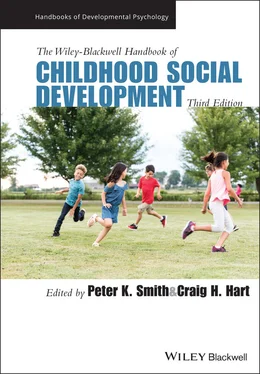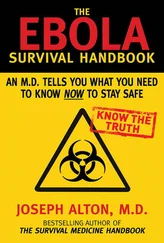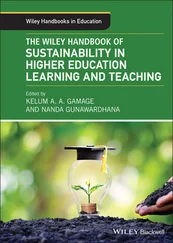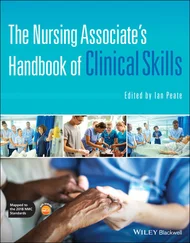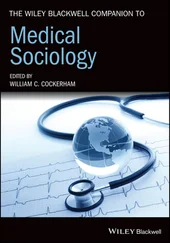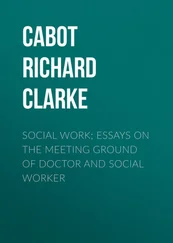8 [c] Bertolero, M., & Bassett, D. S. (2019). How the mind emerges from the brain’s complex networks. Scientific American, 321(1), 28–33.
9 Bigler, E. D. (1999). Neuroimaging in pediatric traumatic head injury: Diagnostic considerations and relationships to neurobehavioral outcome. Journal of Head Trauma Rehabilitation, 14(4), 406–423.
10 Bigler, E. D. (2017). Structural neuroimaging in neuropsychology: History and contemporary applications. Neuropsychology, 31(8), 934–953.
11 Bigler, E. D. (2021). Charting brain development in graphs, diagrams and figures from childhood, adolescence to early adulthood: Neuroimaging implications for neuropsychology. Journal of Pediatric Neuropsychology, 7(1–2), 27–54.
12 Bigler, E. D., Yeates, K. O., Gerhardt, C. A., Vannatta, K., Dennis, M., Rubin, K. H., Stancin, T., & Taylor, G. H. (2013). Neuroimaging and social behavior in children after traumatic brain injury: Findings from the Social Outcomes of Brain Injury in Kids (SOBIK) study. NeuroRehabilitation, 32(4), 707–720.
13 [d] Bilek, E., Itz, M. L., Stossel, G., Ma, R., Berhe, O., Clement, L., Clement, L., Zang, Z., Robnik, L., Plichta, M. M., Neukel, C., Schmahl, C., Kirsch, P., Meyer‐Lindenberg, A., & Tost, H. (2019). Deficient amygdala habituation to threatening stimuli in borderline personality disorder relates to adverse childhood experiences. Biological Psychiatry, 86(12), 930–938.
14 Blinkov, S. M., & Glezer, I. L. (1968). The human brain in figures and tables: A quantitative handbook. Basic Books.
15 Cattelani, R., Lombardi, F., Brianti, R., & Mazzucchi, A. (1998). Traumatic brain injury in childhood: Intellectual, behavioural and social outcome into adulthood. Brain Injury, 12(4), 283–296.
16 Chini, M., & Hanganu‐Opatz, I. L. (2021). Prefrontal cortex development in health and disease: Lessons from rodents and humans. Trends in Neuroscience, 44(3), 227–240.
17 Cipolla, M. J. (2009). The cerebral circulation. Morgan & Claypool Life Sciences.
18 Courchesne, E., Chisum, H. J., Townsend, J., Cowles, A., Covington, J., Egaas, B., Harwood, S., & Press, G. A. (2000). Normal brain development and aging: Quantitative analysis at in vivo MR imaging in healthy volunteers. Radiology, 216(3), 672–682.
19 Davison, A. N., & Dobbing, J. (1966). Myelination as a vulnerable period in brain development. British Medical Bulletin, 22(1), 40–44.
20 [e] Decety, J. (2020). The social brain: A developmental perspective. MIT Press.
21 Dufford, A. J., Kim, P., & Evans, G. W. (2020). The impact of childhood poverty on brain health: Emerging evidence from neuroimaging across the lifespan. International Review of Neurobiology, 150, 77–105.
22 [f] Engel, M. L., & Gunnar, M. R. (2020). The development of stress reactivity and regulation during human development. International Review of Neurobiology, 150, 41–76.
23 Ernhart, C. B. (1991). Clinical correlations between ethanol intake and fetal alcohol syndrome. Recent Developments in Alcoholism, 9, 127–150.
24 Eskenazi, B., Gaylord, L., Bracken, M. B., & Brown, D. (1988). In utero exposure to organic solvents and human neurodevelopment. Developmental Medicine and Child Neurology, 30(4), 492–501.
25 [g] Eslinger, P. J., & Biddle, K. R. (2000). Adolescent neuropsychological development after early right prefrontal cortex damage. Developmental Neuropsychology, 18(3), 297–329.
26 Flensborg‐Madsen, T., Falgreen Eriksen, H. L., & Mortensen, E. L. (2020). Early life predictors of intelligence in young adulthood and middle age. PLoS One, 15(1), e0228144.
27 [h] Gazzaniga, M. S. (1985). The social brain: Discovering the networks of the mind. Basic Books.
28 Geschwind, N. (1975). The borderland of neurology and psychiatry: Some common misconceptions. In D. Blumer & D. F. Benson (Eds.), Psychiatric aspects of neurologic disease (Vol. 1, pp. 1–8). Grune & Stratton.
29 Gilmore, J. H., Knickmeyer, R. C., & Gao, W. (2018). Imaging structural and functional brain development in early childhood. Nature Reviews Neuroscience, 19(3), 123–137.
30 [i] Goetschius, L. G., Hein, T. C., McLanahan, S. S., Brooks‐Gunn, J., McLoyd, V. C., Dotterer, H. L., Lope, D., Mitchell, C., Hyde, L. W., Monk, C. S., & Beltz, A. M. (2020). Association of childhood violence exposure with adolescent neural network density. JAMA Network Open, 3(9), e2017850.
31 Goyal, M. S., Venkatesh, S., Milbrandt, J., Gordon, J. I., & Raichle, M. E. (2015). Feeding the brain and nurturing the mind: Linking nutrition and the gut microbiota to brain development. Proceedings of the National Academy of Sciences USA, 112(46), 14105–14112.
32 [j] Graziano, R. C., Bruce, S. E., Paul, R. H., Korgaonkar, M. S., & Williams, L. M. (2019). The effects of bullying in depression on white matter integrity. Behavioural Brain Research, 363, 149–154.
33 Grossman, S. P. (1967). A textbook of physiological psychology. Wiley.
34 Happaney, K., Zelazo, P. D., & Stuss, D. T. (2004). Development of orbitofrontal function: Current themes and future directions. Brain and Cognition, 55(1), 1–10.
35 Hein, T. C., & Monk, C. S. (2017). Research review: Neural response to threat in children, adolescents, and adults after child maltreatment –a quantitative meta‐analysis. Journal of Child Psychology & Psychiatry, 58(3), 222–230.
36 Herschkowitz, N., & Rossi, E. (1971). Critical periods in brain development. In: Lipids, malnutrition & the developing brain. Ciba Foundation Symposium, 107–119.
37 [k] Heverly‐Fitt, S., Rubin, K. H., Dennis, M., Taylor, H. G., Stancin, T., Gerhardt, C. A., Vannatta, K., Bigler, E. D., & Yeates, K. O. (2016). Investigating a proposed model of social competence in children with traumatic brain injuries. Journal of Pediatric Psychology, 41(2), 235–243.
38 Holtmaat, A., & Svoboda, K. (2009). Experience‐dependent structural synaptic plasticity in the mammalian brain. Nature Reviews Neuroscience, 10(9), 647–658.
39 Huang, H., Shu, N., Mishra, V., Jeon, T., Chalak, L., Wang, Z. J., Rollins, N., Gong, G., Cheng, H., Peng, Y., Dong, Q., & He, Y. (2015). Development of human brain structural networks through infancy and childhood. Cerebral Cortex, 25(5), 1389–1404.
40 Insel, T. R., & Landis, S. C. (2013). Twenty‐five years of progress: The view from NIMH and NINDS. Neuron, 80(3), 561–567.
41 [l] Jacobs, R., & Anderson, V. (2002). Planning and problem solving skills following focal frontal brain lesions in childhood: Analysis using the Tower of London. Child Neuropsychology, 8(2), 93–106.
42 Janusz, J. A., Kirkwood, M. W., Yeates, K. O., & Taylor, H. G. (2002). Social problem‐solving skills in children with traumatic brain injury: Long‐term outcomes and prediction of social competence. Child Neuropsychology, 8(3), 179–194.
43 Jones, J. Y., Selvaraj, B., & Ho, M. L. (2020). Pediatric functional neuroimaging: Practical tips and pearls. American Journal of Roentgenology, 214(5), 995–1007.
44 Juruena, M. F., Eror, F., Cleare, A. J., & Young, A. H. (2020). The role of early life stress in HPA axis and anxiety. Advances in Experimental Medicine and Biology, 1191, 141–153.
45 Keenan, H. T., Clark, A. E., Holubkov, R., Cox, C. S., & Ewing‐Cobbs, L. (2018). Psychosocial and executive function recovery trajectories one year after pediatric traumatic brain injury: The influence of age and injury severity. Journal of Neurotrauma, 35(2), 286–296.
46 [m] Kennedy, D. P., & Adolphs, R. (2012). The social brain in psychiatric and neurological disorders. Trends in Cognitive Science, 16(11), 559–572.
47 [n] Kim, Y. K., & Yoon, H. K. (2018). Common and distinct brain networks underlying panic and social anxiety disorders. Progress in Neuro‐Psychopharmacology & Biological Psychiatry, 80(Pt B), 115–122.
48 [o] Kishida, K. T., & Montague, P. R. (2012). Imaging models of valuation during social interaction in humans. Biological Psychiatry, 72(2), 93–100.
Читать дальше
